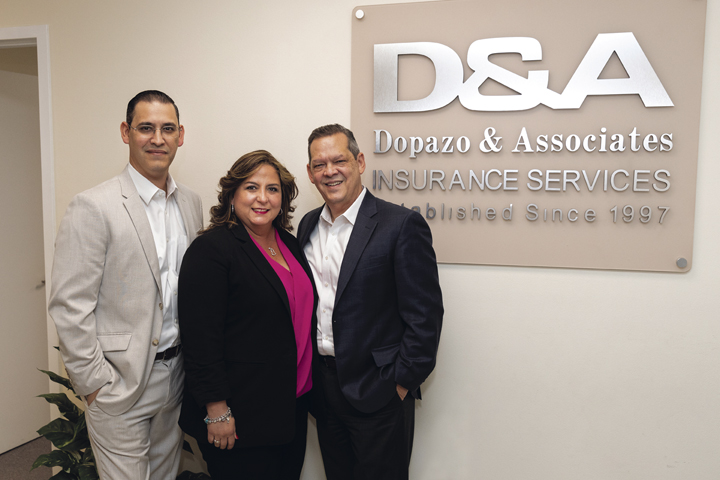FOCUS ON MUNICIPALITIES
Numerous exposures present in this environment of evolving and changing risks
By Lori Widmer
Weather events. Expansion projects. New construction. Cyber security. Fine arts. School shootings. Welcome to the widely varied world of municipalities. In an environment of evolving and changing risks, it seems municipalities are the catch basin for numerous exposures.
Everything from operational and employee liability exposures to public safety and construction risk make municipalities complex entities that make agents’ and brokers’ jobs that much tougher. Attention to detail is essential as all the moving parts that form a municipality bring individual risks to the table.
And the risks can be sizable. The city of Lakewood, Washington, was held liable for a $15 million payout when an unarmed man was killed by city police officers during a SWAT operation. Los Angeles County was held liable to pay a $14 million verdict after a pedestrian was struck and seriously injured by the county’s public defender, who failed to yield to oncoming traffic. The state of Connecticut was ordered to additionally pay nearly $20 million for a quarry it purchased using eminent domain to construct a highway. The Connecticut Department of Transportation originally paid $4.1 million to purchase the land, which was valued by state appraisers between $2.4 million and $4.1 million, but the quarry company’s appraisers later valued the land between $25 million and $29.1 million.
Market overview
Despite the constant churn, the majority of the market hasn’t changed in terms of coverage, according to Mark McCrary, president of Glatfelter Public Practice. “Aside from a few places facing bankruptcy or ongoing budget pressures, the industry is overall very stable. Competition and pricing have also remained mostly unchanged. Generally, the pricing is flat or seeing a slight increase, and strong performers are being rewarded.”
 Even so, McCrary cautions that there are areas of concern that could put pressure on the market. Cyber liability, McCrary says, is an increasing risk that could be challenging due to the current market. “Because there isn’t standardization in this market, cyber coverages can greatly differ and it’s really important for agents to thoroughly assess policies. For example, does your client have cyber extortion coverage? If not, and you didn’t offer it, it could be an E&O concern.”
Even so, McCrary cautions that there are areas of concern that could put pressure on the market. Cyber liability, McCrary says, is an increasing risk that could be challenging due to the current market. “Because there isn’t standardization in this market, cyber coverages can greatly differ and it’s really important for agents to thoroughly assess policies. For example, does your client have cyber extortion coverage? If not, and you didn’t offer it, it could be an E&O concern.”
McCrary says drone use is another exposure for municipalities as many entities from police departments to water authorities are engaging drones in everyday operations. “These organizations should have coverage for not only the drone itself, but also liability coverage for other people who may be impacted by the drone’s usage.”
The municipalities market faces numerous challenges this year, according to Jose Peralta, director of Aon’s National Public Sector practice. The property market, in particular, he says, “has experienced significant losses in the past two or three years. In addition, AIG has been a major property writer for the public sector and they have had significant changes in their appetite.” Other areas of concern, says Peralta, include sexual abuse and molestation as well as traumatic brain injury claims within schools.

—Casey Wigglesworth
Assistant Vice President
Huntington T. Block Insurance Agency
Exposure areas up close
In fact, there are several areas within municipality risks that are putting pressure on the overall market.Annette Tarquinio, executive general adjuster for Engle Martin & Associates, says that the risks within the weather sector are becoming more problematicf or municipalities as storms and weather events are becoming more severe. “From an insurance perspective, it’s getting a little tougher. The reason: Underwriters are exposed to higher risk if there is a concentration of buildings in one area,” says Tarquinio. “For example, if there’s a hailstorm in a county in Texas and you insure that county or municipality, you have a high volume of locations and possibly every building on the policy that just got exposed in one event.”
One surprising area of exposure, according to Casey Wigglesworth, is within fine arts. Wigglesworth, assistant vice president for Huntington T. Block Insurance Agency, Aon Affinity’s fine arts division, says fine arts within the municipality sector is an attractive business class for underwriters, but has its challenges. “We are starting to see some signs of market hardening, particularly due to several, geographically diverse natural disasters (drought, fire, mudslides in California, severe winter storms in the Midwest and New England, and continual wind/water events in Southern and Gulf States) over the last few years.”
Underwriters, Wigglesworth says, are more aware of the challenge of proper assessment of such “widespread and varied risks associated within a single municipality. Keeping pricing consistent relies heavily on two significant factors—concise and accurate underwriting data and how well the municipality is prepared in advance of a natural disaster or weather event.”
Claim drivers
“Depending on the location, CAT damage can be a driver on the property side,” says McCrary. “In general, agents can start by prospecting clients who have high-quality risk management programs and favorable losses—as these accounts are easier to place.”
That includes understanding the fine art claims exposures, as well, says Wigglesworth. “For any municipality, fine art claims are primarily driven by natural disasters and weather events. Sadly, a number of claims are also caused by people just behaving badly, whether intentionally or not.”
That points to another source of claim exposures, Wigglesworth adds. Colleges and libraries that engage volunteers often fail to train those individuals in proper handling of art and artifacts. “Accidents happen, and claims occur. In addition, there is a noted correlation between a suffering local economy and the rise in thefts of outdoor sculptures, particularly those comprised of valuable metals (such as copper) that can then be scrapped and sold,” Wigglesworth says.
Another staff-related claim concern is the largest one in nearly all organizations: workers compensation. Peralta says that within municipalities, workers comp costs continue to be a large chunk of the total cost of risk. He says these are typically driven by public safety and public works operations. Other risks, says Peralta: “Concerns around law enforcement—both from a liability and workers compensation standpoint. We have found auto-related losses to be big contributors—especially since they impact workers compensation, liability, and physical damage budgets.”
Then there are the claim drivers that many municipalities fail to recognize. Tarquinio says the bidding process has become complex and costly, when it used to be as simple as hiring a local contractor and getting the work completed. “Now they’re hiring architects and roofing consultants, going out to bid, wanting to give one contractor the entire project,” she explains. “They’re getting raked over the coals in terms of cost. We would come up with a number using an estimating program, and I can’t get the work done anywhere near that number anymore. It used to be it would come in less. We would write an estimate and they would go to bid and it would be so competitive.”
Also, with what Tarquinio says is an influx of money being invested into municipality infrastructure, there is both an increased cost of exposure and an occasional omission of new buildings or improvements. She says agents and brokers may not be catching every risk involved as a result.
Part of that infrastructure involves smart city technology. Peralta says with the integration of technology into daily operations, cyber exposures are growing in scope. Fortunately, he says well-crafted cyber policies and revised vendor contract requirements go a long way to addressing such risks.
According to Wigglesworth, addressing the risks is a top priority. “Preventing a cyber-attack loss can sometimes be as easy as training staff to spot the signs of a potential social engineering attack often sent via email.”

—Mark McCrary
President
Glatfelter Public Practice
Advice for agents and brokers
With so many claim drivers, the challenge for agents and brokers is understanding the totality of the risks involved and imparting that understanding to customers. “Show that the risk has spread,” Tarquinio advises. Particularly with weather risks, she adds, “If you’re talking about a larger county, your risk is spread out more than if the risk is concentrated to a very small geographical area.”
Wigglesworth says risk management should be educated on how a separate fine art insurance policy can save municipalities premium dollars and offer broader coverage options. “Relative to fine art, the municipality’s master property policy is restrictive and incomplete; it is not the right mechanism for insuring valuable artistic, historic, or rare property,” she says.
McCrary adds, “Once they’ve placed an account, agents can address claims by working with the insurer and their risk management team to make sure they have policies and procedures in place to help prevent incidents like employment practices suits, and to prepare for weather events like floods, wind and hail.”
That includes knowing what’s happening within the municipality. Tarquinio reminds agents and brokers to check in with municipal clients to find out what new building projects are occurring or are in the works. Agents and brokers should be “evaluating the risk for code exposure by taking into consideration the age of the electrical, whether the building has a fire suppression system and whether there is exposure for asbestos or lead if there is a property loss,” she says. “Making sure all of the buildings are scheduled and insured for the correct replacement cost value is extremely important. Replacement cost valuations need to take into consideration that these projects generally include heavy oversight and are costing premium dollar to repair and/or replace.”
Most of all, get in front of municipalities and become part of the conversation, says McCrary. “As a taxpayer, you’re a supporter of your local municipality. Get out in the community and use your contacts to get a seat at the table. Ask for the opportunity to review their program and bring options and alternative solutions.”
For more information:
Aon National Public Sector
www.aon.com
Engle Martin & Associates
www.englemartin.com
Glatfelter Public Practice
www.glatfelterpublicpractice.com
Huntington T. Block Insurance Agency
www.huntingtontblock.com
The author
Lori Widmer is a Philadelphia-based writer and editor who specializes in insurance and risk management.






